
Humlebæk is a town within the municipality of Fredensborg in North Zealand in Denmark, approximately 35 km north of Copenhagen. Humlebæk is located at the shore to Øresund and has a population of 9,746 (2020).

Ivar Bentsen was a Danish architect and educator. He was a central figure in the Bedre-Byggeskik movement and succeeded Carl Petersen as a professor at the Royal Danish Academy of Fine Arts's School of Architecture in 1923. He was awarded the C. F. Hansen Medal in 1943.

Vallekilde Folk High School is a Danish institution of adult education in the folk high school tradition. The school is located in the village of Vallekilde in Odsherred municipality on the island of Zealand.

The Yellow Palace, or Bergum's Mansion, is an 18th-century town mansion situated at Amaliegade 18, next to Amalienborg Palace, in the Frederiksstaden district of Copenhagen, Denmark. It is considered the first example of Neoclassical architecture in Copenhagen.

Jørgen Hansen Koch was a Neoclassical Danish architect. He was chief of the national Danish building administration from 1835 and director of the Royal Danish Academy of Fine Arts from 1844 to 1849.

Sophienholm is a former manor house and exhibition venue located north on the shore of Lake Bagsværd in Lyngby-Taarbæk Municipality in the northern outskirts of Copenhagen, Denmark.
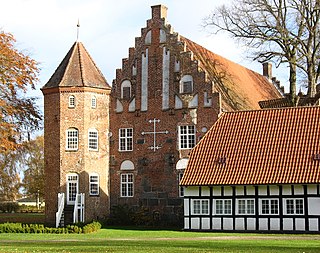
Krabbesholm Højskole is a folk high school founded in 1885, located in Skive, Denmark that caters to students from several nations. The school teaches five main subjects: arts, architecture, graphic design, product design, and photography. The school is recognized as having high academic standards and a creative environment.

Johan Christian Constantin Brun was a German-Danish merchant. Born in Germany, came to Denmark as Royal administrator of the trade on the Danish West Indies and in the same time built a successful private trading empire during the early Napoleonic Wars of the late 18th century, profiting on Denmark's neutrality.
Events from the year 1724 in Denmark.

The Landing at Humlebæk took place on August 4, 1700, in the Swedish invasion of Denmark during the Great Northern War 1700-1721. It was the first offensive during the war by the Swedish army, and it was directly led by Charles XII of Sweden commanding the right flank and Arvid Horn together with Carl Gustav Rehnskiöld at the left. The Swedes were victorious and utterly routed the Danish forces led by Jens Rostgaard.
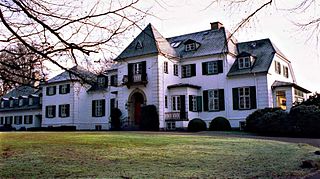
Rolighed is a former country house in Skodsborg, Rudersdal Municipality, approximately 16 km north of Copenhagen, Denmark. The history of the property dates back to 1780 but the current house is from 1927. Formerly associated with the Conservative People's Party, it now houses Mærsk's Center of Leadership.
Mørdrup is a former village and current neighbourhood in the Espergærde district of southern Helsingør, Denmark. Mørdrup has a halt on the Little North railway between Hillerød and Helsingør by way of Fredensborg.
Jens Rostgaard, born 1650, died 1715, was a Danish soldier, civil servant, judge and antiquarian, known for leading the militia against the Swedish landing at Humlebæk in 1700, and for writing the history of Copenhagen.
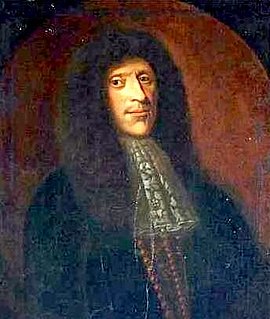
Hans Rostgaard was a Danish bailiff (ridefoged) and county administrator (amtsforvalter) at Helsingør who is remembered for his achievement in the Second Northern War and especially his role during the Swedish siege of Copenhagen and subsequent assault on the city in 1659. He is also associated with Krogerup Manor in Humlebæk where a statue of him by Hans Peder Pedersen-Dan was installed in 1904. He was the father of Frederik Rostgaard and the uncle of Jens Rostgaard.
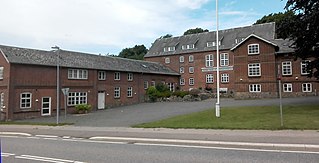
Vestbirk Højskole was a folk high school in the village of Vestbirk in Horsens Kommune from 1884 to 2006. Since its closure, the buildings have been used by the Vestbirk Musik- & Sportsefterskole.

Ane Marie Elise Toft, later Grundtvig, née Carlsen (1813–1854) was a wealthy Danish landowner who owned and efficiently administered the Rønnebæksholm estate near Næstved which she had inherited from her first husband following a marriage lasting less than two years. She opened up Rønnebæksholm to religious revivalists, attracting both clerics and laymen to the estate. In 1851, she married the influential philosopher, N. F. S. Grundtvig, who had visited the estate in 1846. Her manor house subsequently became one of the principal centres of Grundtvigian activity while Grundtvig became deeply devoted to Toft, treating her as his independent and spiritually equal partner.
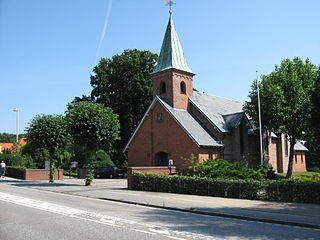
Humlebæk Church is a parish church in Humlebæk, Fredensborg Municipality, som 20 km north of central Copenhagen, Denmark.
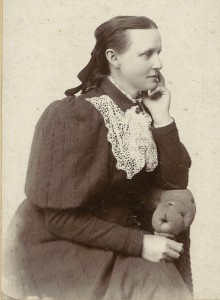
Jenny Erasmine la Cour (1849–1928) was a Danish teacher and textile artist. After attending Askov Højskole as a student, she taught there and in 1885 took charge of a house for girls undertaking teacher training. In 1888, she attended the folk high school in Åkarp, Sweden, to learn weaving and embroidery. The following year she gave courses in weaving in her home, pioneering the revival of hand weaving in Denmark. In 1886, thanks to a grant, she opened a weaving school attached to the Askov school where she taught 800 students over the next 25 years. In 1913, together with a number of colleagues, she established a weaving school in Copenhagen, Husflidsselskabets Vævestue.
















